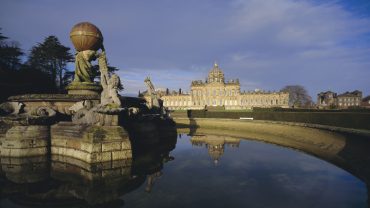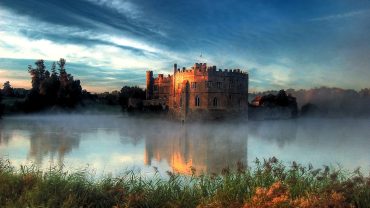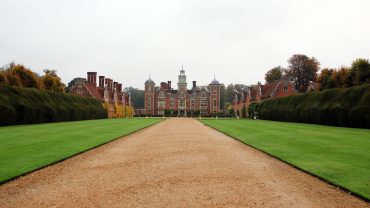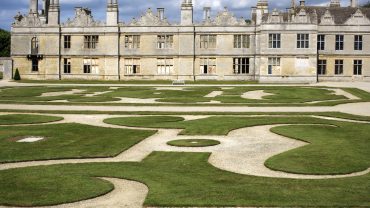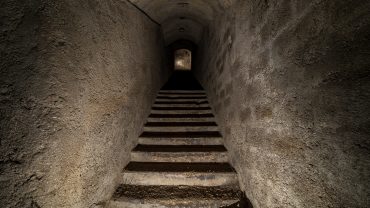From Baroque grandeur to Brutalist architecture, London’s built environment is an encyclopaedia of styles, weaving together Roman foundations, medieval fortifications, Renaissance palaces, European-inspired ornamentation, Victorian eclecticism, and sleek contemporary design.
The city’s skyline is a testament to centuries of innovation and reinvention, with each era leaving its distinct imprint, from the imposing Norman stonework of the Tower of London and the Gothic majesty of Westminster Abbey, to the flourishes of the Victorian Crossness Pumping Station, the post-war Brutalism of the Barbican, and more recently, the high-tech glass and steel marvels that pierce the twenty-first century skyline.
This variety of influences makes London architecture a global showcase of progression, where the past and present are in constant dialogue. Let’s take a look at architecture in London, where history and high-rises stand shoulder to shoulder.
Phoenix From The Flames: The Fall and Rise of London Architecture

The fifteenth-century Guildhall (Credit: Mauro_Repossini via Getty Images)
The Great Fire of London, which started in Thomas Farriner’s bakery on Pudding Lane on 2 September 1666, was a pivotal moment in London’s history. It consumed much of the medieval city, including around 13,200 houses and 87 churches, as well as leaving as many as 80,000 people homeless.
It prompted an ambitious wave of reconstruction led by architects such as Sir Christopher Wren, whose design of the new St. Paul’s Cathedral emerged as the centrepiece of this new vision, ushering in the dramatic flair of the Baroque era and redefining the city’s silhouette. Yet, despite the devastation, several very old buildings in London withstood the inferno and still stand today as rare witnesses to the pre-fire city.
Notable survivors include the Norman church tower of All Hallows-by-the-Tower which dates to around 1080, and the fifteenth century Guildhall. The church of St. Andrew Undershaft which was built in 1532 (which also survived The Blitz), stands in the shadow of 30 St Mary Axe, affectionately known as ‘The Gherkin’, and the stunning, timber-framed Staple Inn on High Holborn dates from the reign of Queen Elizabeth I and is one of the finest examples of Tudor architecture in the UK.
What Sets Architecture in London Apart?
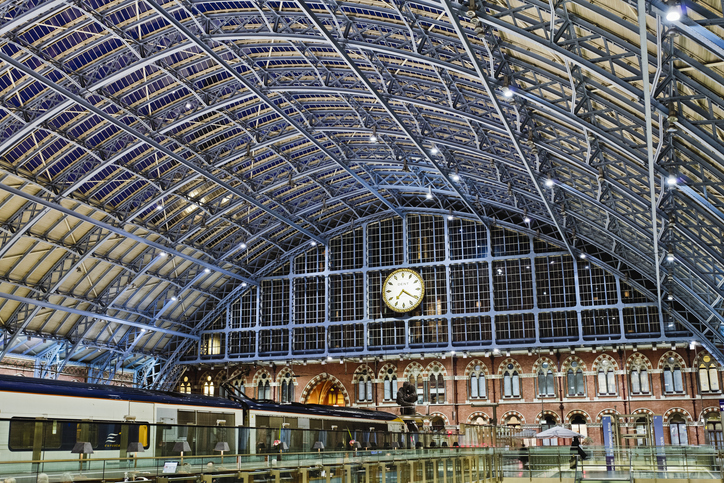
The stunning roof at St. Pancras Station (Credit: Rudy Sulgan via Getty Images)
London is a seamless blend of old and new, traditional and modern. Walking its streets, you can find a fascinating juxtaposition of medieval churches beside Victorian warehouses, while futuristic skyscrapers rise above centuries-old markets and stone alleys.
This interplay of eras, which also includes Georgian, Regency, Victorian, Edwardian, Art Deco, Modern and Brutalist architecture in London, reflects the city’s willingness to embrace reinvention, experimentation, and new ideas, while at the same time honouring a heritage that dates back two thousand years.
The result is a built environment that’s both dynamically rich and deeply rooted, but from the old buildings in London to the new, what are the structures that define London architecture? One could highlight the city’s oldest structures, such as the original White Tower of the Tower of London – built by William the Conqueror – or the twelfth century Temple Church. Others may prefer the staggering grandeur of Buckingham Palace, the Houses of Parliament, or the Natural History Museum. Some favour modernity over medieval, such as the Tate Modern, St. Pancras International, or the 75,000 square metres of glass encasing 122 Leadenhall Street, the extraordinary edifice known as the Cheesegrater.
But what are the buildings that define architecture in London? Here are some of the most famous.
London Wall

Ancient remants of the Roman wall around London (Credit: jewhyte via Getty Images)
While in the strictest sense London Wall isn’t a building, it stands as one of the most significant remnants of Roman Britain, shaping the boundaries and identity of London architecture for over 1,500 years. Dating to around 200 AD, it was built to protect the bustling Roman settlement of Londinium and stretched nearly three kilometres, enclosing the heart of the city. The wall stood over six metres high and was up to 2.6 metres thick, featuring gates like Ludgate, Newgate, and Bishopsgate that controlled access and connected to major Roman roads.
Today, only fragments of the London Wall remain above ground, with some of the most impressive sections visible at Tower Hill and hidden among modern office buildings, gardens, and even an underground car park. It offers a rare glimpse into London’s Roman past as well as a physical reminder of the city’s evolution from a Roman outpost to a thriving modern metropolis, making it a defining feature of the capital’s architectural heritage.
The Lloyd’s Building

Richard Rogers' iconic Lloyd's Building in the City of London (Credit: Maremagnum via Getty Images)
The Lloyd’s Building, completed in 1986 and designed by Richard Rogers, is a landmark of high-tech architecture in the heart of London’s financial district. Known as the ‘Inside-Out Building,’ it revolutionised office design by placing all its services – including lifts, ducts, and staircases – on the exterior. This radical approach not only maximised internal space but also gave the building its striking, futuristic appearance.
Built on the historic site of East India House, the Lloyd’s Building replaced an earlier structure but preserved elements of the original façade as a nod to its heritage. Recognised for its architectural significance, it’s a symbol of London’s embrace of modernity and technical ingenuity, while still respecting the city’s layered history. Architecture in London doesn’t get much more polarising than the Lloyd’s Building, but without doubt it’s cemented its place as one of the most important and influential buildings in London’s architectural landscape.
Battersea Power Station

The stunning Art Deco Battersea Power Station (Credit: jamesharrison via Getty Images)
One of London’s most iconic industrial landmarks, Battersea Power Station is celebrated for its monumental scale and striking Art Deco design. Conceived in the late 1920s and designed by architect Sir Giles Gilbert Scott, the power station was constructed in two phases: Battersea A (1929–1935) and Battersea B (1937–1955, which included a hiatus due to World War II), resulting in the distinctive four-chimney silhouette which dominates the south bank of the River Thames. At its peak, Battersea Power Station generated twenty percent of London’s electricity, powering major sites such as the Houses of Parliament and Buckingham Palace. The building’s vast brick façade and lavish interiors, including original Art Deco fittings, made it a symbol of British engineering prowess and one of the buildings that defines London architecture.
The power station’s chimneys, each over 100 metres tall, became prominent features of the London skyline and even served as navigational aids for RAF pilots during World War II. After finally being decommissioned in 1983, the building stood derelict for decades, but in recent years, Battersea Power Station has undergone a major transformation, with its historic structure preserved and repurposed for new uses. Today, it houses shops, restaurants, offices, and apartments, blending its rich industrial heritage with contemporary life and ensuring it’s not just a relic of London’s past, but a vibrant part of its future.
St. Bartholomew the Great

The magnificent Norman Romanesque interior of St. Bartholomew the Great (Credit: anutr tosirikul via Getty Images)
One of the great old buildings in London is St. Bartholomew the Great. Founded in 1123, it’s the city’s oldest surviving parish church and a rare example of Norman Romanesque architecture. Built as part of an Augustinian priory, it features huge rounded arches and sturdy columns, alongside later Gothic additions, creating a unique blend of styles. Despite damage during the Dissolution of the Monasteries, much of its medieval character remains, including the atmospheric choir and the Tudor gatehouse added in the 1590s.
Described by Poet Laureate John Betjeman as having the finest Norman interior in London, the church is one of the cornerstones of London architecture. Over nearly 900 years, St Bartholomew the Great has witnessed royal visits, miraculous healings, and even appeared in films including Four Weddings and a Funeral. Today, it offers a tangible link to London’s rich religious and architectural history and is a defining landmark in London’s architectural landscape.
Trellick Tower
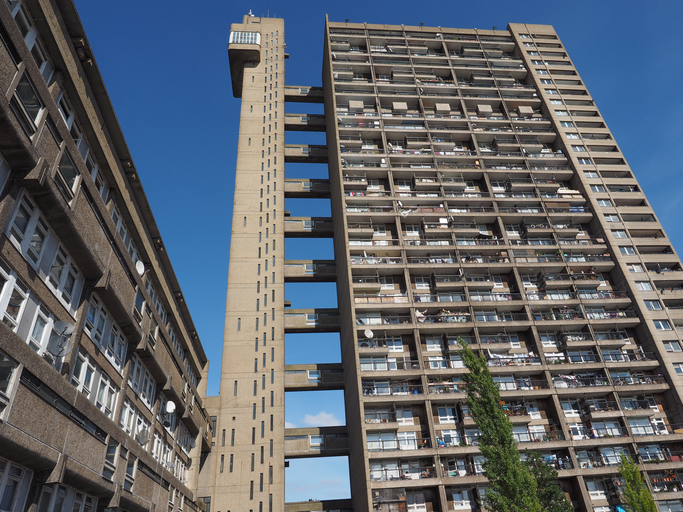
Trellick Tower, Ernő Goldfinger's Brutalist icon (Credit: claudiodivizia via Getty Images)
Trellick Tower, designed by Ernő Goldfinger and completed in 1972, is a defining icon of Brutalist architecture in London and a landmark of post-war social housing. Rising thirty-one storeys above West London, it was the tallest residential building in Europe at its opening. The tower’s bold silhouette is instantly recognisable, with its main residential block connected by elevated walkways to a separate service tower housing lifts and utilities – a design refined from Goldfinger’s earlier Balfron Tower in East London. Built as part of the Cheltenham Estate, Trellick Tower was intended to address London’s housing shortage while preserving ground space for community amenities.
Despite initial criticism for its stark concrete façade, Trellick Tower has since become celebrated as a modernist masterpiece. Resident campaigns in the 1980s led to major improvements, and the building achieved Grade II* listed status in 1998, recognising its exceptional architectural and historic significance. Today, Trellick Tower is admired for its sculptural form, innovative design, and enduring influence on high-rise London living.
Natural History Museum

The Natural History Museum, a ‘cathedral to nature’ (Credit: stevenallan via Getty Images)
The Natural History Museum in South Kensington is one of London’s most celebrated architectural and cultural landmarks. Conceived as a ‘cathedral to nature’ by founder Richard Owen, the building was designed by Alfred Waterhouse after the original architect, Francis Fowke, died unexpectedly. Waterhouse’s vision combined Romanesque and Gothic Revival styles, resulting in a grand Victorian structure clad entirely in decorative detail paying tribute to the natural world, with intricate carvings of plants and animals, including extinct species on the east wing and living ones on the west.
An icon of architecture in London, the Natural History Museum opened in 1881 and was built to house Britain’s rapidly expanding natural history collections, which had outgrown their original home at the British Museum. Today, it contains over eighty million specimens, from dinosaur skeletons and meteorites to rare minerals and Charles Darwin’s collections. The museum’s architecture and exhibits reflect Victorian ambition and scientific curiosity, making it both a masterpiece of design and a world-class centre for research and public education.
The Gherkin

The Gherkin, an instantly recognisable part of London's new skyline (Credit: Karl Hendon via Getty Images)
The Gherkin, officially known as 30 St Mary Axe, is one of London’s most distinctive and celebrated skyscrapers. Designed by Norman Foster and opened in 2004, it stands 180 metres tall with forty-one stories, marking a bold departure from the city’s traditionally low-rise skyline. Its unique, curving silhouette resembling a pickled cucumber quickly earned it its popular nickname and established it as a symbol of modern London architecture.
Built on the site of the historic Baltic Exchange, which was destroyed by a bomb in 1992, the Gherkin was commissioned by reinsurance company Swiss Re and became the first of a new wave of high-rise buildings in the City of London. The structure is renowned for its innovative high-tech and sustainable design, featuring a double-skin façade and spiraling light wells that maximise natural light and airflow, significantly reducing the building’s energy consumption. The swirling diamond-patterned glass panels are not only visually striking but also serve functional purposes, creating a natural ventilation system.
The Gherkin has won numerous awards, including the prestigious RIBA Stirling Prize for the architect, and is widely regarded as a catalyst for the transformation of London’s skyline, inspiring further architectural innovation in the capital with buildings such as the Cheesegrater (122 Leadenhall Street), the Scalpel (52 Lime Street), the Walkie-Talkie (20 Fenchurch Street), the Jenga (8 Bishopsgate), and the Glass Onion (City Hall on the Southbank).
The Liberty Building

Liberty, one of London's most famous department stores (Credit: shomos uddin via Getty Images)
The Liberty building on Great Marlborough Street is one of London’s most distinctive landmarks, celebrated for its striking Tudor Revival façade and rich Arts and Crafts heritage. It may look like one of the famous old buildings in London, but it was only completed in 1924. It was designed by the father-and-son architectural team Edwin Thomas Hall and Edwin Stanley Hall, who brought founder Arthur Lasenby Liberty’s vision to life after his death. The building’s iconic exterior was constructed from almost seven hundred cubic metres of reclaimed oak and teak timbers sourced from two decommissioned Royal Navy battleships, HMS Impregnable and HMS Hindustan – a nod to the adventurous spirit of Elizabethan England and a testament to sustainable craftsmanship.
Unlike traditional department stores, Liberty was designed to feel like a grand yet welcoming country house, with three central atriums surrounded by smaller, intimate rooms, many featuring fireplaces and bespoke fittings. The timbered façade, reminiscent of Chester’s historic Rows, stands in bold contrast to the Beaux Arts architecture of Regent Street, making Liberty instantly recognisable. Awarded Grade II* listed status in 1972, the Liberty building remains a beloved symbol of the creativity, individuality, and enduring appreciation for artisanal quality in the architecture of London.



